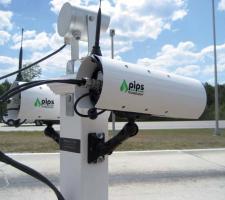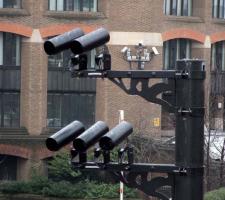
Federal Signal's Brian Shockley uses examples from around the world to make the case for the greater use of automatic license plate recognition technology in the US. It is time, he says, to consider the possibilities of a national network and the use of average speed enforcement
Public safety and intelligent transportation are not often associated with one another, yet vehicles travelling along roadways represent a common focal point for both disciplines. Automated Licence Plate Recognition (ALPR) technology is quickly becoming a recognised technology of benefit to transportation planners, toll authorities, law enforcement and homeland security professionals alike.
Advances in ALPR technology are enabling new, exciting, and never-before-realised applications through a shared ALPR network. This article will outline a vision of how the proliferation of this technology can serve multiple purposes throughout a community, a region or even an entire country.
The future vision
ALPR is being used in literally dozens of different standalone applications around the world, yet the data is typically held within the confines of a specific organisation such as a toll authority, state or local law enforcement agency or departments of transportation and not used for the benefit of all parties. Despite the many standalone systems that clearly illustrate the value of ALPR, there has not yet been a true representation of an integrated ALPR network to improve transportation and enhance public safety and security. Allow me to paint a picture...Armed robbery in Cincinnati
A recent armed robbery of a gas station in Cheviot, a suburb of Cincinnati, was solved through the use of the Back Office System Software (BOSS) component of an ALPR network. After seeing a report on the incident, Captain Jeff Butler of the Cincinnati Police Department contacted the Cheviot Police Department to determine if there was a licence plate associated with the robbery. Cheviot reported that witnesses had reported the licence plate number of a vehicle seen speeding away from the scene of the crime, but that the plate belonged to a man in prison which gave them little information to work with in their investigation. Butler then turned to Heather Whitton in the Information Technology Section of Cincinnati Police Department to investigate what information they could provide on the vehicle. Whitton queried the licence plate in the BOSS, which collects all of the data collected by the city's seven mobile ALPR systems. Within a matter of minutes she was able to report on the type of vehicle, a light blue Honda, which had some damage to its front end, and could actually provide pictures of it on the morning of the crime. She was then able to map all sightings of the vehicle, finding that the vehicle was frequently seen parked on a certain street."With the intelligence provided by the
The Cincinnati ALPR network, since inception, has collected more than 2 million reads and over 50,000 vehicles of interest have been identified. More than 1,000 arrests were made as a result. Additionally, the system has enabled the collection of almost $0.25 million in revenue due to the city for unpaid fines associated with vehicles.
Congestion charging in London
In what is arguably the most well-known congestion charging initiative worldwide, ALPR enables the City of London'sSince early 2003, motorists driving in central London on weekdays between certain hours have been required to pay a toll. There are some exemptions, including motorcycles, licensed taxis, vehicles used by disabled people, some alternative fuel vehicles, buses and emergency vehicles. Area residents receive a 90 per cent discount for their vehicles. Payments can be made at selected retail outlets, at machines located in the charging area, via the Internet and cellular telephone, at any time during that day. Motorists can purchase weekly, monthly and annual passes with modest (15 per cent) discounts. A network of more than 1,000 ALPR cameras records the licence plate numbers of vehicles and matches them with the list of those who have paid. The owners of vehicles that have not paid as required are sent a fine that far exceeds that of the pre-paid amount. This fine is reduced if paid within two weeks, and increases if not paid after a month.
The programme is considered effective. More than 100,000 motorists a day pay the charge (individual drivers and fleet vehicles). Automobile traffic has declined about 20 per cent (a reduction of about 20,000 vehicles per day), and travel times have improved due to increased traffic speeds within the zone. Average traffic speed during charging days (including time stopped at intersections) increased 37 per cent, from 8mph (13 km/h) prior to the charge up to 11mph (17 km/h) after pricing was introduced. Peak period congestion delays declined about 30 per cent and bus congestion delays declined 50 per cent. Bus ridership increased 14 per cent and Underground (subway) ridership by about 1 per cent. Taxi travel costs declined significantly (by 20-40 per cent) due to reduced delays. Vehicles can cover more miles per hour, so taxi and bus service productivity (riders per day) and efficiency (cost per passenger mile) increased substantially.
Derek Turner, the man credited with introducing the London approach to congestion charging, believes that most urban areas and suburban areas will eventually have some sort of road user pricing. "It's nonsense to suggest we can sustain a free-at-the-point-of-delivery congested road network. After all, we pay for water in a metered way."
Homeland security in Italy
The Campania and Calabria regions of Italy will be protected by a network of more than 230 ALPR cameras deployed by Sintel Italia. The cameras are part of a larger CCTV-based Homeland Security initiative.The cameras not only capture and read the licence plates of regular cars and commercial vehicles but will also capture and read the licence plates of motorbikes and mopeds. The system will then provide licence plate information to a central application, where comparison will be made against a known list of vehicles of interest. If a positive comparison is made, the user will be notified and the CCTV system will be used to track the vehicle.
Emanuele Polizzi of Sintel Italia states that he is "very impressed with the cameras; the installation of the cameras is very straightforward. The cameras that are already in place are working well and capturing more number plates than expected".
Average speed enforcement and other applications
Additional applications of advanced ALPR technology
include toll violation enforcement on RFID-based tollways, open road
transponder-free tolling, electronic vehicle registration,
identification of stolen vehicles and wanted felons, monitoring of
tollways by patrol cars to identify chronic toll violators, accurate
real-time travel time data for driver information networks and
transportation planning, monitoring of speed and travel delays through
work zones, pattern analysis of vehicles' movements for Homeland
Security applications, monitoring of narcotics trafficking and
protection of critical infrastructure.
Average speed enforcement, by its very nature, modifies driver behaviour. No longer can drivers slow down at speed checkpoints to avoid detection, creating travel disruptions and bottlenecks in the process. Average speed enforcement creates a system that educates drivers that if they choose to speed, they will pay.
While accepted in certain parts of the world, the concept of average speed enforcement is not yet ubiquitous. Many parts of North America do not yet allow for this practice due to the automated nature of the enforcement. As awareness grows and the potential for improved traffic flows and road safety is realised, policy-makers, educators, and legislators will embrace this concept and it will become commonplace.













